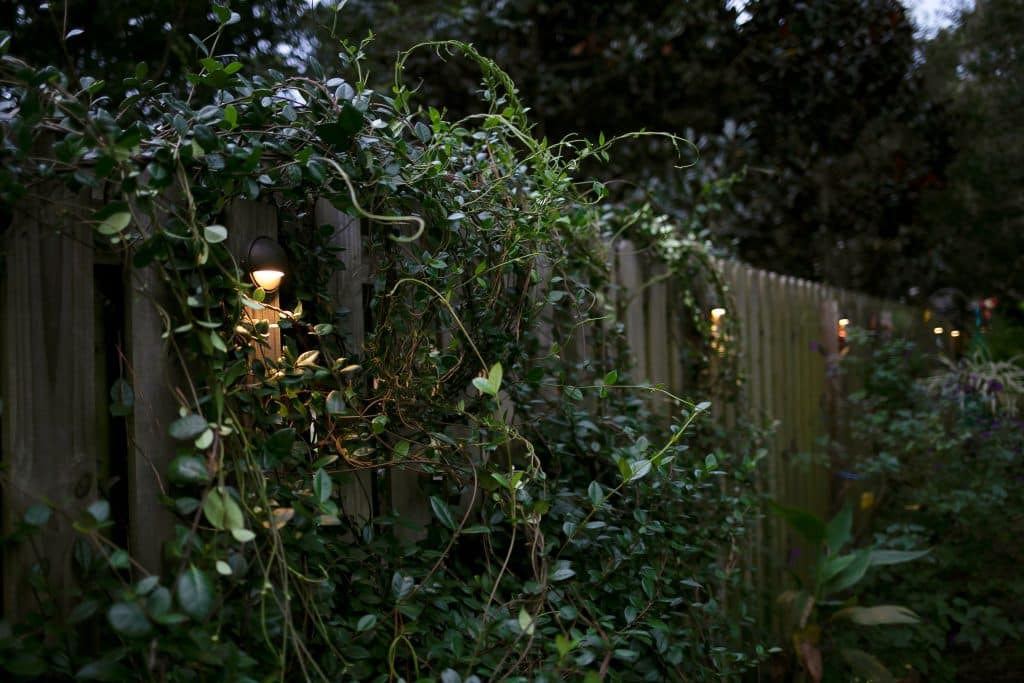March 20, 2021
5 Energy-Efficient Outdoor Lighting Tips
Outdoor landscape lighting is a simple but effective, beautiful way to add to your home’s aesthetic appeal. But, when designing your outside lighting plan, going energy-efficient with your selections can help you save money on your utility bill while still packing a (bright) punch for your outdoor spaces.
Energy-Saving Illuminating
There are a few easy ways to implement energy-efficient lighting for your landscape. Doing your due research up front to figure out which will suit your landscape’s unique needs will help you save energy — and money — in a way your whole family can enjoy.
1. Leverage the Power of Energy-Efficient Bulbs
Gone are the days when you had one option – incandescent bulbs that zap energy – for both your indoor and outdoor spaces. Today’s LED bulbs are 10 times more efficient than their predecessors and can light up bigger areas with a more energy-efficient bulb that casts a broader beam.
A few available varieties include:
- Pathway lights
- Outdoor lanterns with electric candle
- Tiki-style torches
- Spotlights
In addition to LED, compact fluorescent lights (CFLs) are 4 times more efficient than incandescent bulbs. These must be protected from the weather, and their light tends to dim when the weather is cold. Another energy-efficient bulb on the scene is metal halide, which is 3 to 4 times more efficient than incandescent bulbs and gives off a natural-appearing glow. However, these bulbs require warming up, so they are unsuitable for any sort of motion-triggered lighting in your yard.
2. Consider Your Bulb Voltage
Another way to save energy and costs is to use low voltage bulbs for your landscape lighting. Installing lights that are too bright could irritate your neighbors, make it difficult for guests on your property to stay safe, and potentially be dangerous for cars driving by. Generally speaking, 15 watts is sufficient for many outdoor landscape lighting applications.
3. Use Motion Sensors
One of the motivations behind installing landscape lighting is for security. To achieve that goal while also being mindful of energy consumption, invest in outdoor motion sensor lighting. These energy-efficient lights only come on when they sense motion, then remain on until activity ceases.
4. Time Your Lights
Another way to save energy through your home’s landscape lighting is to put your lights on timers and set them, so they only illuminate when it becomes dark outside. Using them only when you need them gives you greater control over when your lights shine and how much energy you allow them to expend. Even better, use a smart hub to control your lights to conserve energy while also taking the need to remember to set your light timers away.
5. Consider Light Height
Putting a little thought into how high you install your outdoor landscaping lights has surprising effects on how energy-efficient your lighting is. By placing lights at varying heights in your yard, light distribution is more effective, negating the need for you to keep purchasing more lights to make up for the resulting dark areas of your yard. Effective landscape lighting includes different types of lights at positions that maximize their efficiency.
SkyFrog Lights Up Your Yard but Remembers Your Wallet
When you are ready to add lights to your outdoor spaces but want to be as energy-efficient as possible to not later pay for it on your utility bills, SkyFrog Landscape is your landscape lighting team. We knowledgeably assess your property and recommend which components and bulbs will best suit your family’s needs. Our outdoor lighting adds to your home’s aesthetic appeal, security, and safety – without sacrificing efficiency. Contact us today to get a free estimate about your project and learn more about what we can do to bring light into every corner of your outdoor spaces!

